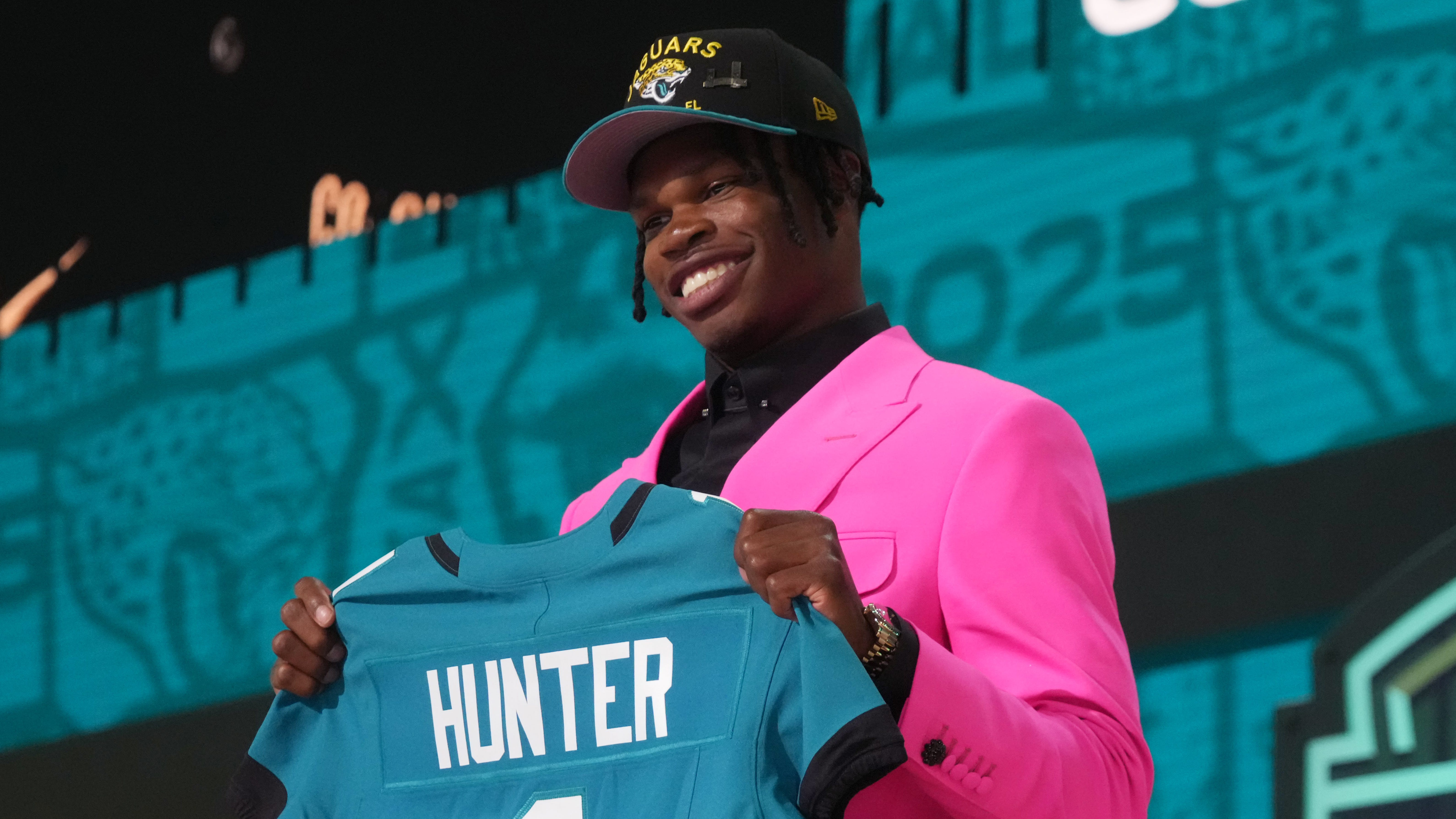Donald Trump spent his Saturday at the Vatican, attending the funeral of Pope Francis along with his wife Melania and leaders from more than 150 countries. Before the ceremony, the US president met with the Ukrainian president, Volodymyr Zelenskyy, for the first time since their heated Oval Office exchange in February.
This time, the two men sat face to face on chairs drawn up in St Peter’s Basilica, after huddling briefly with the French president, Emmanuel Macron. The results of the quiet conversation were apparent soon after, when Trump posted on his social media platform that there was “no reason for Putin to be shooting missiles into civilian areas, cities and towns, over the last few days. It makes me think that maybe he doesn’t want to stop the war, he’s just tapping me along, and has to be dealt with differently”.
The two men then emerged to take their places among the guests of honor at the funeral, with the one notable difference being that Zelenskyy was greeted with cheers from the assembled crowd outside.
Trump listened as Cardinal Giovanni Battista Re read a homily that seemed to nod at the tensions between Trump and the late pontiff, particularly over the White House policies on migration and the recent executive order on deportations.
“‘Build bridges, not walls’ was an exhortation he repeated many times,” Re said during his homily.
Trump then flew home on Air Force One to be greeted by new polling from a number of organizations that shows he is historically unpopular for a president nearing Day 100 of his term.
Here are the key stories at a glance:
At papal funeral, Trump has a revelation – about Russia
“It was a fitting moment for an epiphany, if that’s what this was” our global affairs correspondent Andrew Roth wrote of the Trump-Zelenskyy meeting. “The photographs released from the summit were dramatic: the two men sat alone in simple chairs in front of a mosaic of Jesus being baptised in the river Jordan. Keith Kellogg, Trump’s envoy to Ukraine, felt compelled to quote the book of Matthew. ‘Blessed are the peacemakers for they shall be called the children of God’”, he wrote.
Soon after, came the Truth Social post from Trump suggesting that Russia’s slaughter of Ukrainian civilians this week, “makes me think that maybe [Putin] doesn’t want to stop the war.”
It was a “very symbolic meeting”, Zelenskyy said later, and it had the “potential to become historic, if we achieve joint results”.
Polling shows Trump is historically unpopular
Americans, including some Republicans, are losing faith in Donald Trump across a range of key issues, according to polling released this week. One survey found a majority describing the president’s second stint in the White House so far as “scary”.
A poll by the Associated Press-Norc Center for Public Affairs Research published this weekend, found that even Republicans are not overwhelmingly convinced that Trump’s attention has been in the right place.
Vicious interpersonal conflicts among Hegseth staff cloud leak investigation
Defense secretary Pete Hegseth’s orbit has become consumed by a contentious leak investigation that those inside the Pentagon believe is behind the firing of three senior aides last week, according to five people involved in the situation.
The secretary’s office has been marked for weeks by ugly internal politics between chief of staff Joe Kasper, who left the department on Thursday, and the three ousted aides, including senior adviser Dan Caldwell, deputy chief Darin Selnick, and the chief to the deputy defense secretary, Colin Carroll.
Trump officials deport two-year-old US citizen ‘with no meaningful process’
The Trump administration has deported a two-year-old US citizen “with no meaningful process”, according to a federal judge, while in a different case the authorities deported the mother of a one-year-old girl, separating them indefinitely.
Lawyers in the two cases, the first in Louisiana and the second in Florida, say their clients were arrested at routine check-ins at Immigration and Customs Enforcement (Ice) offices and were given virtually no opportunity to speak with them or family members.
They are the latest examples of the White House cracking down on documented immigrants, including green card holders and also even citizens who have the status by birth or naturalization.
Democrats decry Wisconsin judge’s arrest as Republicans call to remove her
The FBI’s arrest of Wisconsin judge Hannah Dugan has triggered strong reactions from Republican and Democratic politicians, as the Trump administration veered closer to direct confrontation with the judiciary over its crackdown on immigration.
Following the Milwaukee county circuit judge’s arrest on Friday, over allegations that she helped a man evade US immigration officers at her courthouse, Republicans have called for her removal while Democrats regard her arrest as a reflection of the administration’s increasing disregard of judicial independence amid its push to deport immigrants on an enormous scale.
Trump mega-donor’s paper savages his pardon of Las Vegas Republican
A Nevada newspaper owned by a Donald Trump mega-donor has savaged the US president’s decision to pardon a Republican councilwoman who was convicted of using donations intended to fund a statue of a police officer to pay for cosmetic surgery.
The Las Vegas Review-Journal, owned by the billionaire Miriam Adelson, described the decision as a “debasement of presidential pardon power” in a scathing editorial published after Trump granted clemency to Michele Fiore, a former Las Vegas councilwoman and Nevada state lawmaker.
Fiore was convicted of fraud last year. Federal prosecutors said at trial that she had raised more than $70,000 for the statue of a Las Vegas police officer who was fatally shot in 2014 in the line of duty, but had instead spent it on cosmetic surgery, rent and her daughter’s wedding.
What else happened today:
-
As the US health secretary, Robert F Kennedy Jr, makes major cuts in funding, the infrastructure built to mitigate Covid-19 has become a clear target – an aim that has the dual effect of weakening immunization efforts as the US endures the largest measles outbreak since 2000.
-
Tributes have been paid to Virginia Giuffre one of the most prominent victims of the disgraced US financier Jeffrey Epstein who also alleged she was sexually trafficked to Prince Andrew, who died by suicide on Friday. “Virginia was a fierce warrior in the fight against sexual abuse and sex trafficking. She was the light that lifted so many survivors,” her family said in a statement.
Catching up? Here’s what happened on 25 April 2025.

















